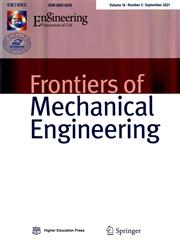15GW风电场的大涡模拟:流量效应、能量预算以及与尾流模型的比较
IF 4
2区 工程技术
Q1 ENGINEERING, MECHANICAL
引用次数: 1
摘要
规划的海上风电场集群的额定容量超过10吉瓦。风电场的布局优化和产量估计通常使用计算成本低廉的分析尾流模型进行。最近的研究结果表明,大型(千兆瓦)海上风电场的流动物理比小型(亚千兆瓦)风电场更复杂。由于分析尾流模型是根据现有的亚千兆瓦风电场的数据进行调整的,因此它们可能无法为大型风电场集群产生准确的结果。在本研究中,将15GW风电场的大涡模拟结果与两个分析尾流模型进行了比较,以证明潜在的差异。选择TurbOPark模型和Niayifar和Porté-Agel模型是因为它们使用了高斯尾流剖面和湍流模型。与许多其他大型涡流模拟风电场研究不同,风电场在横向方向上具有有限的尺寸,在这些研究中,由于循环边界条件,风电场实际上是无限宽的。结果表明,在这样一个有限尺寸的千兆瓦风电场中,会出现横向发散和会聚等新的影响。与尾流模型的比较表明,尾流模型预测的风电场功率输出与大涡模拟之间存在高达40%的巨大差异。对能源预算进行了分析,以解释差异。结果表明,尾流模型忽略了地转强迫、压力梯度输入的能量和能量耗散等相关动能源和汇。将其中一些源和汇考虑在内可以提高尾流模型的准确性。本文章由计算机程序翻译,如有差异,请以英文原文为准。
Large-eddy simulation of a 15 GW wind farm: Flow effects, energy budgets and comparison with wake models
Planned offshore wind farm clusters have a rated capacity of more than 10 GW. The layout optimization and yield estimation of wind farms is often performed with computationally inexpensive, analytical wake models. As recent research results show, the flow physics in large (multi-gigawatt) offshore wind farms are more complex than in small (sub-gigawatt) wind farms. Since analytical wake models are tuned with data of existing, sub-gigawatt wind farms they might not produce accurate results for large wind farm clusters. In this study the results of a large-eddy simulation of a 15 GW wind farm are compared with two analytical wake models to demonstrate potential discrepancies. The TurbOPark model and the Niayifar and Porté-Agel model are chosen because they use a Gaussian wake profile and a turbulence model. The wind farm has a finite size in the crosswise direction, unlike as in many other large-eddy simulation wind farm studies, in which the wind farm is effectively infinitely wide due to the cyclic boundary conditions. The results show that new effects like crosswise divergence and convergence occur in such a finite-size multi-gigawatt wind farm. The comparison with the wake models shows that there are large discrepancies of up to 40% between the predicted wind farm power output of the wake models and the large-eddy simulation. An energy budget analysis is made to explain the discrepancies. It shows that the wake models neglect relevant kinetic energy sources and sinks like the geostrophic forcing, the energy input by pressure gradients and energy dissipation. Taking some of these sources and sinks into account could improve the accuracy of the wake models.
求助全文
通过发布文献求助,成功后即可免费获取论文全文。
去求助
来源期刊

Frontiers of Mechanical Engineering
Engineering-Mechanical Engineering
CiteScore
7.20
自引率
6.70%
发文量
731
期刊介绍:
Frontiers of Mechanical Engineering is an international peer-reviewed academic journal sponsored by the Ministry of Education of China. The journal seeks to provide a forum for a broad blend of high-quality academic papers in order to promote rapid communication and exchange between researchers, scientists, and engineers in the field of mechanical engineering. The journal publishes original research articles, review articles and feature articles.
 求助内容:
求助内容: 应助结果提醒方式:
应助结果提醒方式:


